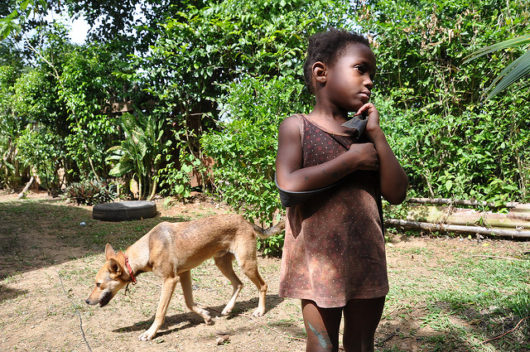Top 10 Facts About Living Conditions in Jamaica

The home of Bob Marley and reggae music hosts many tourists each year in its breezy Caribbean, yet not all are aware of the living conditions of Jamaican people beyond the tourist resort walls. Growth and progress are reflected through the development and strides various organizations provide in cooperation with the locals to transform this island nation. In the text below, some facts to know about how each advancement rejuvenates living conditions in Jamaica are presented.
Top 10 Facts About Living Conditions in Jamaica
- There are 2.89 million people recorded living in Jamaica with around 25 percent of people living in Kingston, the island nation’s capital. This affects living conditions in Jamaica in a big way due to the congestion in the capital.
- The World Bank reports that Jamaica’s poverty rate declined from 21.1 percent in 2015 to 17.1 percent in 2016 and is projected to continue to decline up until 2020. Jamaica’s government created a reform program that gained national and international support. Through such support, in 2013 the World Bank provided more than $500 million for development policy and investment financing for private sector growth, transformation and building resilience for the climate and social status.
- Due to Jamaica’s freedom of the press, their broadcast media are typically commercial and can carry diverse comment. This provides Jamaicans with a variety of news to reach their locals. Reporters Without Borders rank this island nation in the top 10 nations regarding the World Press Freedom Index.
- Jamaica has been a nation with free health care since April 2008. Since then, patients at public hospitals and health centers have benefited from several health services free of cost regardless of their living conditions in Jamaica. Records show that more than 422,000 persons have benefited from the services at public health facilities such as appointments and hospital stay.
- Total employment throughout Jamaica increased and unemployment fell from 12.2 percent in April 2017 to 9.7 percent in April 2018. The government had a role in this success. The Ministry of Finance reported that they put an emphasis on the training required for skilled labor so that they could increase the level of high-paying jobs and employment. Further, youth unemployment also fell by 3.2 percent, hitting its lowest rate since 2007.
- As of January 2019, employees in Kingston make an average salary of $19,864 per year. The living conditions in Jamaica are affordable whether people rent or purchase a home with a one-bedroom rental going for $360 per month and purchasing a home is on average less than $75,000. Most Jamaicans do not spend a lot of utilities because the cost of kitchen appliances on the island is expensive. Groceries are inexpensive in the area and dining out to eat is on average $40.
- The curriculums for primary and secondary education in Jamaica mimic the curriculums in the U.K. Secondary school consists of two stages. The first stage consists of grades from seven to nine, and the second stage of grades 10 and 11. NAFSA reports that upon completion of grade 11, students take the Caribbean Secondary Education Certificate (CSEC), with subjects administered by the Caribbean Examinations Councils (CXC).
- The World Bank reported imported fossil fuels provided 90 percent of Jamaica’s energy needs in the past. Currently, the International Finance Corporation (IFC) supports BMR Energy, creator of BMR Jamaica Wind Project. It is the largest private-sector renewable energy project in Jamaica. Since BMR Energy reported taking ownership and operation of the 36-megawatt wind farm, Jamaica set goals to generate 30 percent of its energy from local renewable sources to reduce greenhouse gases by 2030.
- The government issued several states of emergencies throughout 2018 that led the military and police to now engage in joint security operations. These include checkpoints and curfews to extinguish the violence and restore order. To record, World Nomads reported that the island is littered with gang violence and drug exportation that affect citizens because it interrupts commerce and daily life routines.
- According to the latest WHO data published in 2018, life expectancy in Jamaica is 73.6 years for males and 78.5 years for females. That said, the total life expectancy is 76 years, which ranks Jamaica on 59th place on World Life Expectancy. In addition, the possibility of child deaths under the age of five in 2017 was typically 15 to every 1,000 newborn babies.
The improvement of living conditions in Jamaica is developing daily. Even though health care is free in Jamaica, there is still work to be done to make the health centers more accessible. Nevertheless, the employment rate in Jamaica is on the climb for both youth and adults. The literacy rate among the youth in primary and secondary education is a prevalent component to the jobs they seek after they graduate. Since transitioning to renewable energy, the island nation is on its way to further improve the living conditions for its citizens.
– Carolina Chaves
Photo: Flickr
